 United States (English)
United States (English)
Shopping Cart
Empty Cart
Part No: {{entry.product.code}}
Quantity: {{entry.quantity}}
Total {{cartInfo.totalPriceWithTax.value | currency:"$"}}
Total {{0 | currency:"$"}}
 United States (English)
United States (English)
Part No: {{entry.product.code}}
Quantity: {{entry.quantity}}
Total {{cartInfo.totalPriceWithTax.value | currency:"$"}}
Total {{0 | currency:"$"}}
Asia Pacific
Europe, Middle East, Africa
 România (Română)
România (Română)
 European Union (English)
European Union (English)
 België (Nederlands)
België (Nederlands)
 Belgique (Français)
Belgique (Français)
 France (Français)
France (Français)
 Deutschland (Deutsch)
Deutschland (Deutsch)
 Italia (Italiano)
Italia (Italiano)
 Nederland (Nederlands)
Nederland (Nederlands)
 Polska (polski)
Polska (polski)
 Россия (русский)
Россия (русский)
 South Africa (English)
South Africa (English)
 España (Español)
España (Español)
 Україна (українська)
Україна (українська)
 United Kingdom (English)
United Kingdom (English)
 Česko (Česká republika)
Česko (Česká republika)
 United Arab Emirates (English)
United Arab Emirates (English)
North America
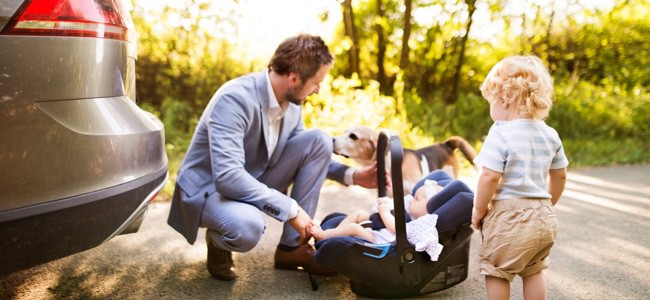
From the moment you bring your baby home, nothing is more important to you than keeping your child safe. You can’t encase your little one in bubble wrap, but with a car seat you can keep them safe every time you take them for a ride. Since their invention in the 1960s, child car seats have protected children from the life-threatening effects of car crashes.
With car crashes being one of the leading causes of death for kids ages 1-13, selecting the right car seat for your child is imperative. There are hundreds of car seats on the market, so how do you know which one is right for your youngster? We’re here to help with the key information that every parent, grandparent and caregiver needs.
To give your child the best protection, you need to know what type of car seat is recommended for their age, weight and height. The National Highway Traffic Safety Administration (NHTSA) has developed some guidelines to help you select the right type of seat.
Newborn to 1 year: Babies under 1 year must ride in a rear-facing car seat in the backseat.
1-3 Years: Your child should remain in a rear-facing seat as long as possible. Once they reach the top weight or height limit of the seat, switch to a forward-facing model.
4-7 Years: A forward-facing seat is best for this age group. Once your child outgrows the forward-facing seat, they remain in the backseat riding in a booster seat.
8-12 Years: For maximum safety, keep your child in a booster seat until they are big enough for a seatbelt. Before making the switch to the seatbelt, make sure it fits properly with the shoulder belt snug across the chest and shoulder and the lap belt rests across the upper thighs (not stomach). They still are safest sitting in the backseat.
Now that you know the car seat recommendations for each age group, read on to learn about the different types of car seats available.
Rear facing – The best car seat for infants and young children, a rear-facing car seat features a harness and cradles and moves with your child to reduce stress to the spinal cord and neck in the event of a crash.
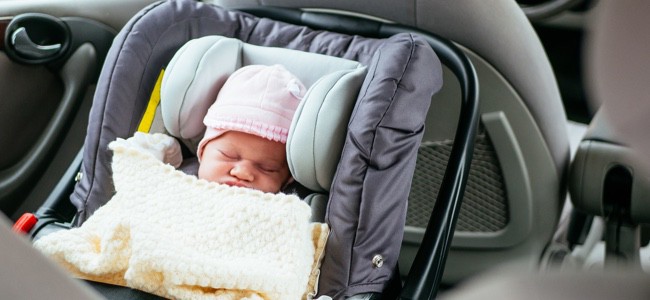
Forward facing – Featuring a tether and harness, a forward-facing (or front facing) car seat restricts forward movement during a crash.
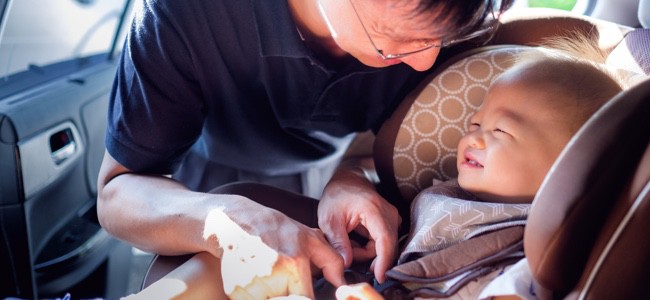
Booster seat – Designed for big kids, a booster seat keeps your child safe until they are big enough for the seatbelt.
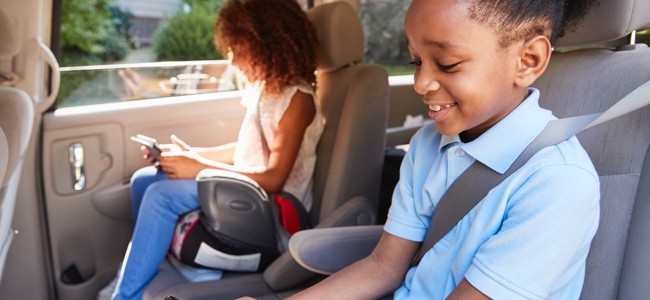
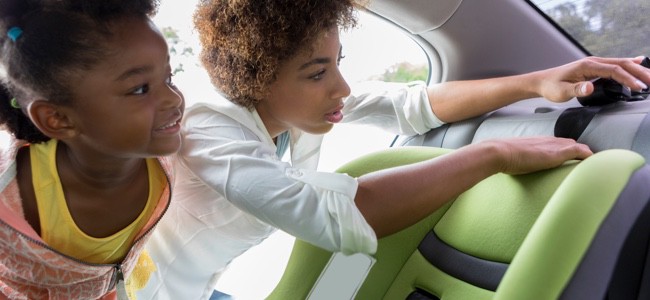
Consult your vehicle’s owner’s manual to determine where the car seat should be placed and how it should be installed. Car seats can be installed using the seatbelt or the LATCH (Lower Anchors and Tethers for Children) system that has been in all new vehicles since 2002.
Make sure the seat fits your vehicle. A small vehicle may not accommodate a car seat with a wide base. Measure your backseat before you go shopping.
Usability – NHTSA uses a five-star system to rate car seats for their ease of use. The ratings reflect ease of installation, how easy it is to secure your child in the seat and how clear the instruction manual is. Check out the NHTSA car seat finder to see the ratings.
Adjustments – As your child grows, you’ll want to make adjustments to the harness and headrest. Look for a model that offers one-hand adjusting, quick-release buckles and harnesses that don’t require rethreading.
Side-impact protection – While there are no federal standards for side-impact protection in car seats, choosing a seat with this feature gives you another layer of safety for your child.
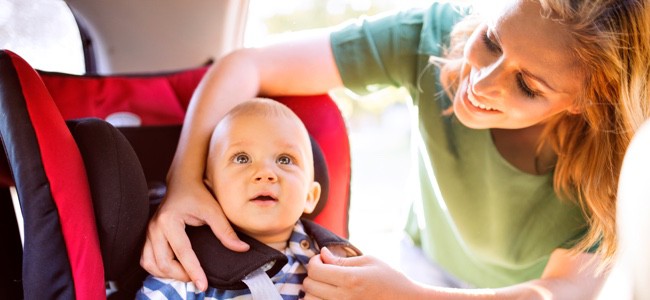
To get the full benefit of a car safety seat, it must not only be installed correctly but your child must be positioned correctly in the seat. Here are some pointers to help you.
NHTSA reports that in 59% of cases, the car seat is used incorrectly1. To ensure that you have installed your child’s car seat correctly and are using it properly, NHTSA has established inspection stations. To find a Child Passenger Safety (CPS) technician near you, use NHTSA’s searchable database.
Learn more about quality auto parts, find your car part, or find a local car repair shop today.
Additional sources: 1NHTSA Car Seat Usage
The content contained in this article is for entertainment and informational purposes only and should not be used in lieu of seeking professional advice from a certified technician or mechanic. We encourage you to consult with a certified technician or mechanic if you have specific questions or concerns relating to any of the topics covered herein. Under no circumstances will we be liable for any loss or damage caused by your reliance on any content.